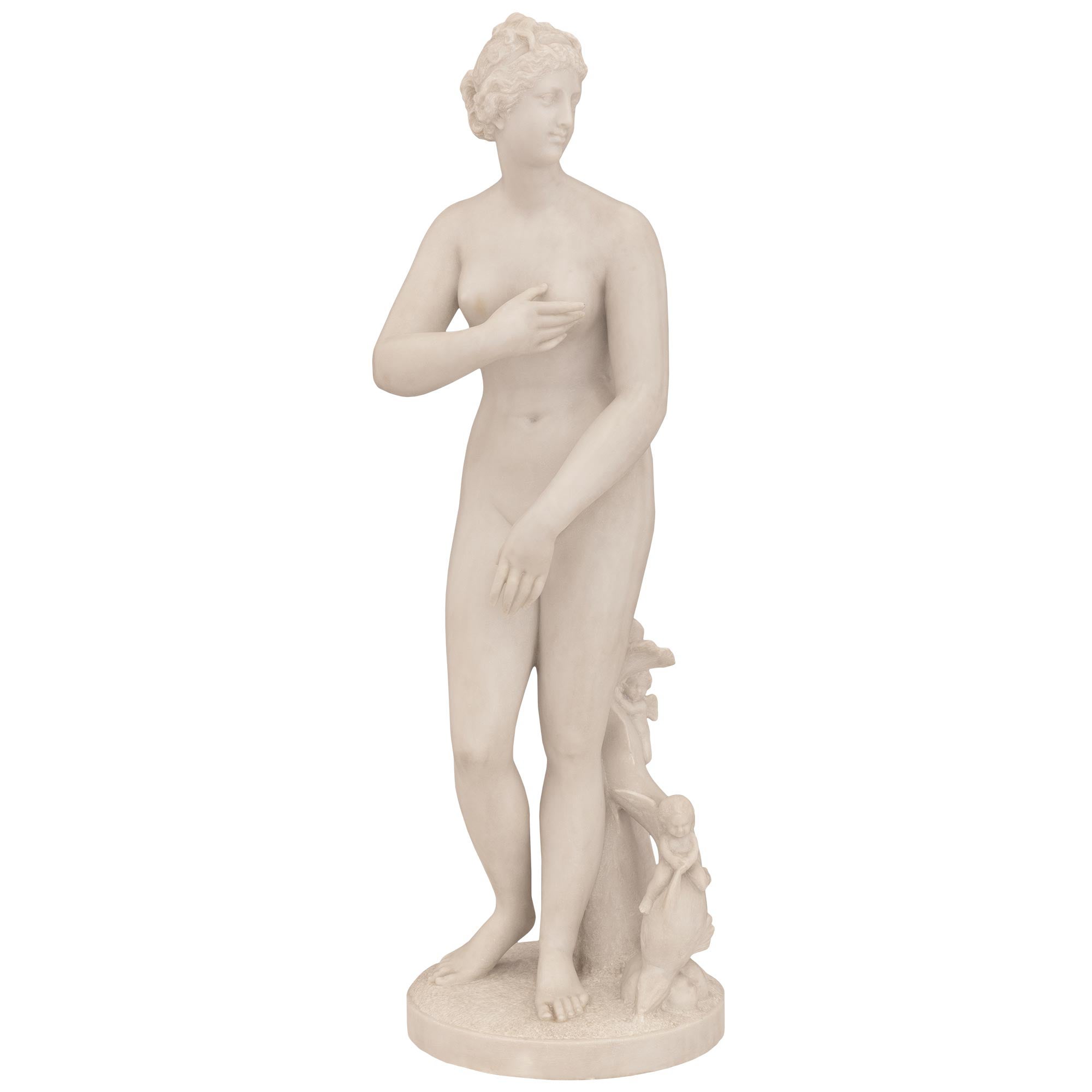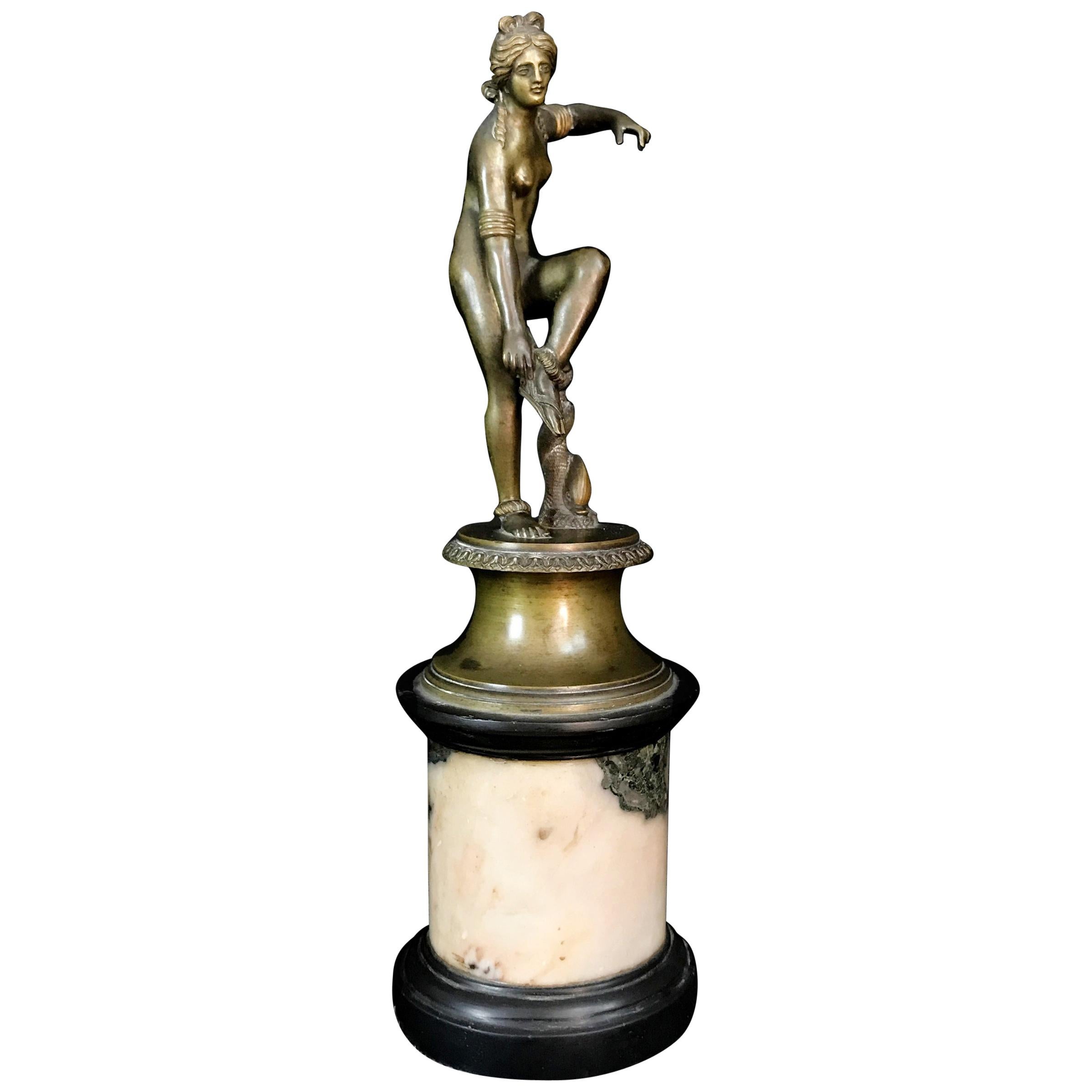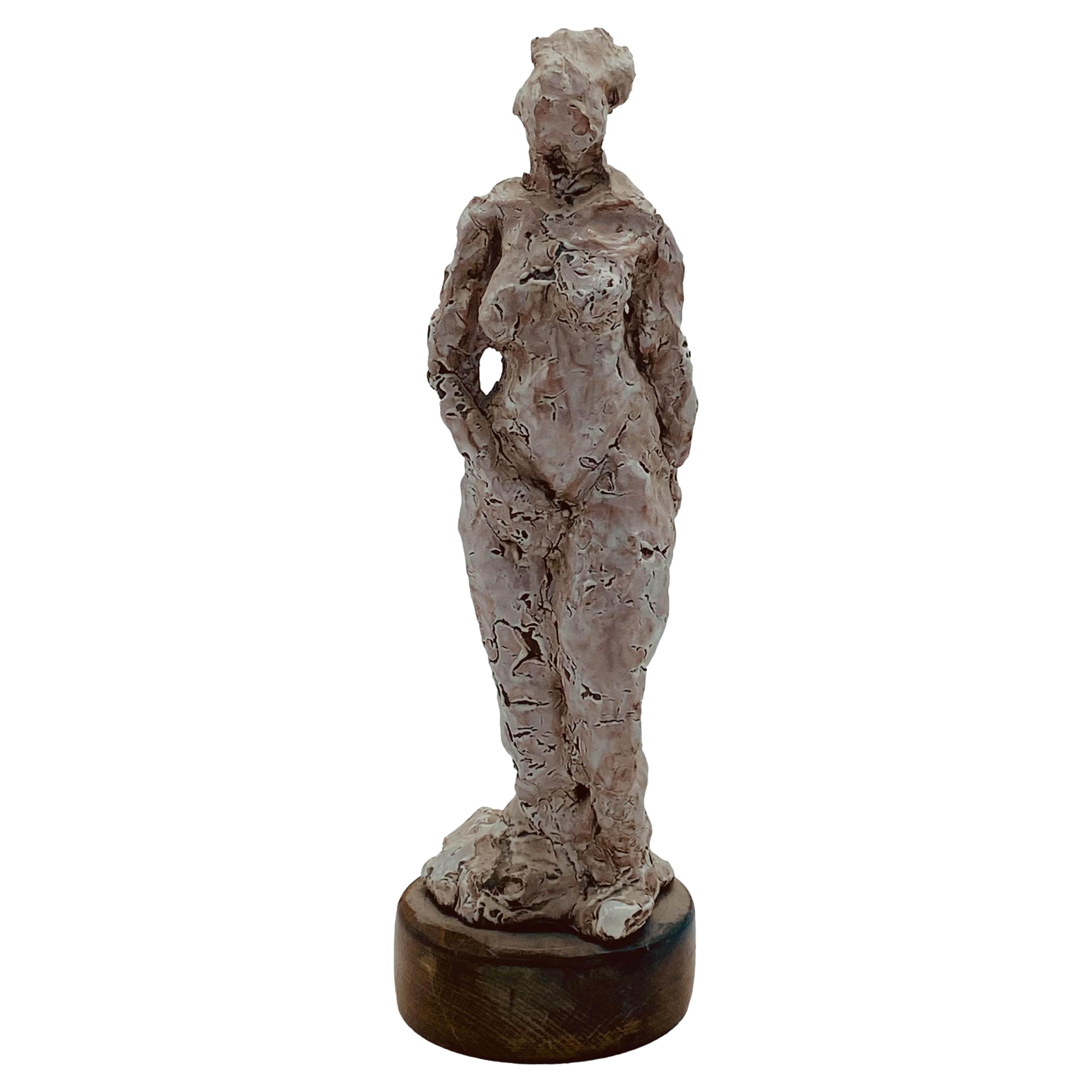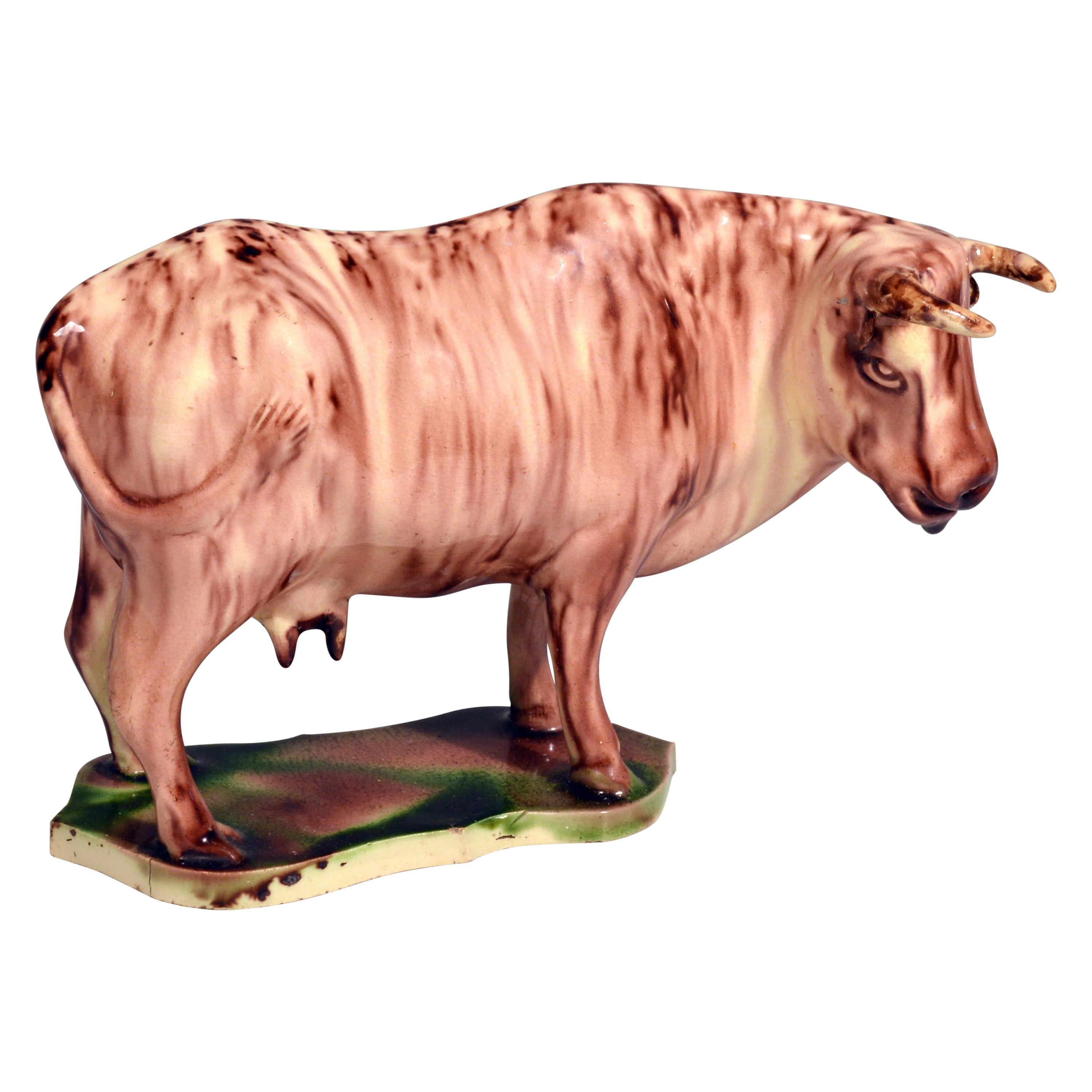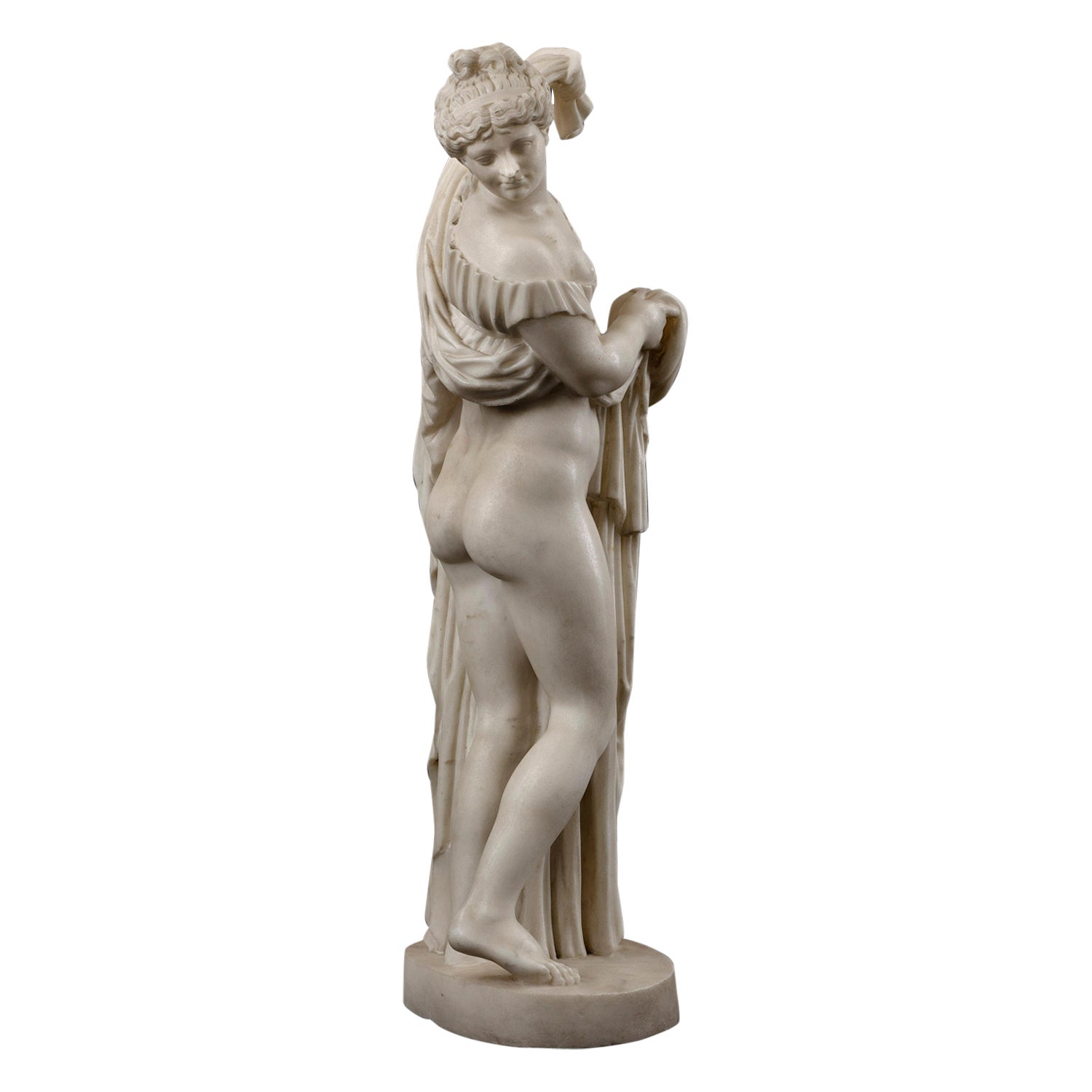Items Similar to Venus Pudica (Medici-type) - 18th century, Italy
Want more images or videos?
Request additional images or videos from the seller
1 of 13
Venus Pudica (Medici-type) - 18th century, Italy
About the Item
Monumental sculpture representing the Venus Pudica (Medici-type)
18th Century
Italian (Rome)
White marble
Based on a model from Antiquity, the Medici Venus, currently in the Uffizi Gallery in Florence
Height: 100 cm
Width: 42 cm
Depth: 30 cm
H 39 1/3 x W 16 ½ x D 11 7/8 inch
This 18th century marble torso of Venus embodies the epitome of classical beauty and artistic refinement. Beyond its aesthetic appeal, this sculpture holds historical significance, intertwining with the Roman model, housed in the Uffizi Museum, and reflecting the cultural phenomenon of the Grand Tour. Additionally, the influence of the Venus Pudica archetype adds depth to its interpretation and understanding. Let’s delve into these facets, illuminating the rich tapestry of influences that shape the Marble Torso of Venus.
At the heart of the torso of Venus lies its Roman model, a timeless representation of Venus, the goddess of love and beauty, showcased in the prestigious Uffizi Museum. Rooted in antiquity, this sculpture exemplifies the classical ideal, characterized by its harmonious proportions and serene countenance. Drawing inspiration from the Venus Pudica archetype, which portrays the goddess modestly covering herself, the Roman model captivates with its elegance and poise. Through a nuanced analysis, scholars unravel the intricacies of its craftsmanship, marveling at its ability to evoke a sense of ethereal beauty and divine grace. The Marble Torso of Venus pays homage to this esteemed tradition, reinterpreting the classical motif for a contemporary audience while honoring its enduring legacy.
Central to the interpretation of the torso is its connection to the Venus Pudica archetype, which portrays the goddess in a modest pose, covering herself with her hands. This archetype, prevalent in ancient Roman sculpture, symbolizes notions of chastity, purity, and feminine virtue. By incorporating elements of the Venus Pudica into its design, the Marble Torso of Venus transcends mere aesthetic beauty, inviting viewers to contemplate deeper themes of love, desire, and the human condition. This fusion of classical ideals with contemporary sensibilities underscores the enduring relevance of the Venus Pudica archetype and its influence on artistic expression throughout history.
Against the backdrop of the 18th century, the Grand Tour emerged as a rite of passage for European aristocrats and intellectuals, beckoning them to embark on a journey of cultural enlightenment across the continent. Italy, with its rich artistic heritage, served as the ultimate destination, offering travelers an opportunity to immerse themselves in the splendor of antiquity. Amidst this cultural milieu, the Medici-Venus emerged as a beacon of classical beauty, enticing patrons to acquire such masterpieces as souvenirs of their travels. As they adorned their estates with these treasures, they not only showcased their refined taste but also perpetuated a legacy of artistic appreciation for generations to come. The Marble Torso of Venus thus becomes a tangible symbol of the Grand Tour movement, embodying the spirit of cultural exchange and intellectual curiosity.
The Venus de' Medici is a renowned marble sculpture from ancient Greece, celebrated for its depiction of the goddess Venus, also known as Aphrodite. She was sculpted around the 1st century BC during the Hellenistic period, its exact creator remains unknown, though it's believed to be a Roman replica of a Greek original, possibly from the hands of the famed sculptor Praxiteles.
This masterpiece, standing at approximately 155 cm tall, showcases Venus in what's known as the "Medici Venus Type" or "Crouching Venus" pose. With her right arm delicately veiling her modesty and her left hand gracefully adjusting her drapery, the sculpture exudes an aura of feminine beauty, sensuality, and poise.
Named after the influential Medici family of Florence, who owned it during the Renaissance, the Venus de' Medici holds a significant place in art history. Its timeless elegance and idealized proportions have inspired artists for centuries, serving as a model of classical harmony and naturalism. Today, this masterpiece finds its home in the Uffizi Gallery in Florence, where it continues to captivate visitors with its unparalleled beauty and profound cultural significance. As a symbol of grace and aesthetic perfection, the Venus de' Medici stands as a testament to the enduring legacy of ancient Greek art and its enduring influence on Western aesthetics.
- Dimensions:Height: 39.38 in (100 cm)Width: 16.54 in (42 cm)Depth: 11.82 in (30 cm)
- Style:Grand Tour (Of the Period)
- Materials and Techniques:
- Place of Origin:
- Period:
- Date of Manufacture:18th century
- Condition:Wear consistent with age and use.
- Seller Location:Bruxelles, BE
- Reference Number:1stDibs: LU6666239131452
About the Seller
5.0
Vetted Seller
These experienced sellers undergo a comprehensive evaluation by our team of in-house experts.
1stDibs seller since 2022
6 sales on 1stDibs
Typical response time: 5 hours
- ShippingRetrieving quote...Ships From: Bruxelles, Belgium
- Return PolicyA return for this item may be initiated within 3 days of delivery.
More From This SellerView All
- Callipygian Venus - Italian, 19th CenturyLocated in Bruxelles, BECallipygian Venus 19th Century Italian (Naples or Rome) White marble After the Antique: Naples Archaeological Museum (IT) Roman version of a Hellenistic 3rd Century B.C. model Height: 62 cm Width: 22 cm H 24 1/2 x W 8 2/3 inch The Callipygian Venus, also known as the Aphrodite Kallipygos or the Callipygian Venus, all literally meaning “Venus of the beautiful buttocks”, is an Ancient Roman marble statue...Category
Antique Mid-18th Century Italian Neoclassical Figurative Sculptures
MaterialsMarble
- Engraved Nautilus shell - Netherlands, 18th centuryLocated in Bruxelles, BEEngraved Nautilus shell Netherlands, 18th century 13 x 10 x 7 cm Although fragmentary this beautiful nautilus preserves almost intact a beautiful hunting scene. The 18th century ...Category
Antique 18th Century Belgian Dutch Colonial Natural Specimens
MaterialsShell
- Cerberus, Italy, 17th CenturyLocated in Bruxelles, BECerberus Black painted stone Italy, 17th century Measures: 80 x 69 x 36cm (one head missing) Cerberus, cruel monster, fierce and strange, Through his wide threefold throat barks as a dog Over the multitude immers'd beneath. His eyes glare crimson, black his unctuous beard, His belly large, and claw'd the hands, with which He tears the spirits, flays them, and their limbs Piecemeal disparts (Dante, Inferno, Canto VI). Cerberus figure seated, in his role of ferocious guardian of the underworld; he shows a nervous musculature, an adherent skin which reveals the ribs, long and robust limbs; his heads are broad and the eyes set well apart. Painted in black to amplify his menacing look, the infernal guardian is depicted with his famous attributes, writhing his heads, growling and barking furiously. Cerberus, in Greek mythology, was the monstrous watchdog of the underworld – also known as the “hound of Hades” – preventing the dead from leaving, and making sure that those who entered never left. A child of Typhon and Echidna, he was part of a monstrous family, which included Orthus, the Lernaean Hydra, and the Chimaera as well. Only on three occasions Cerberus was tricked by visitors of Hades: Heracles did it with his strength, Orpheus with his music. In "The Inferno", Dante places Cerberus as the guardian of the third circle of Hell. With his three mouths, Dante saw Cerberus as a beast that was synonymous with the sin of Gluttony. Virgil gets past the monster by throwing mud in his three mouths, temporarily choking him. Very rare are the representations of Cerberus in ancient statuary...Category
Antique 17th Century Italian Renaissance Figurative Sculptures
MaterialsStone
- Grand Tour Cinerarium - 18th centuryLocated in Bruxelles, BEGrand Tour Cinerarium Limestone, inlaid with ancient fragments of Franco-Italian 18th Century and Roman, 3rd Century AD Provenance: Private Collection UK Private Collection France, ...Category
Antique 18th Century Italian Grand Tour Urns
MaterialsLimestone, Marble
- Griffin Head, Italy, 16th CenturyLocated in Bruxelles, BEGriffin head Italy, 16th century On a modern metal stand Measures: 20 x 29 x 21 cm (without the stand) The griffin is a legendary creature with the body of a lion, the head an...Category
Antique 16th Century Italian Renaissance Animal Sculptures
MaterialsMarble
- Italian Memento Mori skull - 17th centuryLocated in Bruxelles, BEItalian Memento Mori skull Marble North of Italy, 17th century H 9 x L 7 x P 14 cm At the turn of the 16th century, they were the height of fashi...Category
Antique 17th Century Italian Renaissance Figurative Sculptures
MaterialsMarble
You May Also Like
- Italian 19th Century White Carrara Marble Statue Of Venus De MediciLocated in West Palm Beach, FLA most elegant Italian 19th century white Carrara marble statue of Venus de Medici. This stunning statue depicts the elegant Venus caught in a momentary pose, as if surprised in the ...Category
Antique 19th Century Italian Figurative Sculptures
MaterialsMarble
- 18th Century, Italian Bronze Sculpture with Venus Removing Her SandalLocated in IT18th Century, Italian Bronze Sculpture with Venus Removing Her Sandal This bronze sculpture represents Venus as she takes off her sandal. Made in the neoclassical era in Italy, it consists of the bronze sculpture of the Greek goddess Aphrodite, Venus for the Romans. The naked goddess, getting ready for the bath, makes the very human gesture of loosing a sandal. The left arm is raised, as if to compensate the position while maintaining the balance. Next to her, wrapped around a rocky spur, is a dolphin, an animal iconographically linked to the goddess because of his birth from the foam of the sea. The figure rests on a cylindrical and concave bronze base, with finely chiselled reserves. The bronze element is in turn resting on a africano marble cylinder with black of Belgium marble base. Venus is one of the major Roman goddesses primarily associated with eros and beauty. It is traditionally understood as the equivalent of the Greek goddess Aphrodite, goddess of beauty, physical and passionate love, among the major deities of Olympus. His birth is due to a dramatic event: Uranus, Heaven, is mutilated by his son Cronus, who punishes him for the wrongs inflicted on his mother. The torn limbs of Uranus fall into the sea and fertilize the foam of the waves of the island of Cyprus. From the waves emerges in all its splendor Aphrodite. Since the 4th century, Aphrodite begins to be represented with characters more human and less heroic. Praxiteles with the 'Aphrodite Cnidia,' for the first time in the history of sculpture, depicts her naked, as she prepares to take a ritual bath. From the Pressitele’s model descend the Capitoline Venus (Capitoline Museums of Rome) and the Venus de’ Medici (Uffizi Museum of Florence) accompanied by Eros on the back of a dolphin. This vein also includes a subject frequently attested in the Hellenistic and then Roman Ages, with examples in bronze, marble and terracotta: the Aphrodite who fastens the sandal. The luck that this type of representation had in the following centuries is demonstrated by the vast number of sculptures that represent it. In this bronze work the goddess resumes the position of Oplontis’s Naked Venus: here Venus holds an apple in her left hand, a reminder of her victory in the beauty contest in which she prevailed over Minerva and Juno by judgment of Paris. In our bronze instead, the hand seems to want to shake the apple, which however has not been molded. Perhaps the bronze is inspired by another work, such as the bronzes kept in the archaeological museum of Padua. Another example is the famous 'Venus in bikini" found in Pompeii, so-called because it depicts the goddess in the same pose, but with the breasts and hips covered by bands painted in gold. The dolphin depicted next to it could be inspired instead to the Medici Venus...Category
Antique Late 18th Century Italian Neoclassical Figurative Sculptures
MaterialsMarble, Belgian Black Marble, Bronze
- Salvatore Vitagliano "Venus Pudica", Glazed Terracotta Sculpture, 1970sLocated in Naples, IT"Venus Pudica", glazed terracotta sculpture, Salvatore Vitagliano, Naples 1970.Category
Vintage 1970s Italian Mid-Century Modern Figurative Sculptures
MaterialsTerracotta
- 18th Century Whieldon-Type Creamware Pottery CowBy Thomas Whieldon PotteryLocated in Downingtown, PARare 18th century Whieldon-type creamware pottery cow, circa 1765. The rare press-moulded cow stands on a flat slab base with lobed edges. The cow is s...Category
Antique Mid-18th Century English Georgian Animal Sculptures
MaterialsCreamware, Pottery
- Italian Marble Bust of a Girl, 18th CenturyBy Achille CollasLocated in London, by appointment onlyItalian 18th Century Marble Bust of a Girl Late 18th century bust of a girl, in the manner of Luigi Valadier Son of Andrea Valadier, a Prove...Category
Antique 18th Century Italian Grand Tour Busts
MaterialsMarble
- Venus Medici, Head in Carrara White Marble, Late 19th CenturyBy Europa AntiquesLocated in Madrid, ESVenus medici - head in carrara white marble. Late 19th century Measures: Height 36 cm Width 20 cm Depth 19 cm Weight 15 kg Maximum projection 44 cm Statue base 12 x 10 cm Place where...Category
Antique Late 19th Century Italian Classical Roman Figurative Sculptures
MaterialsCarrara Marble
